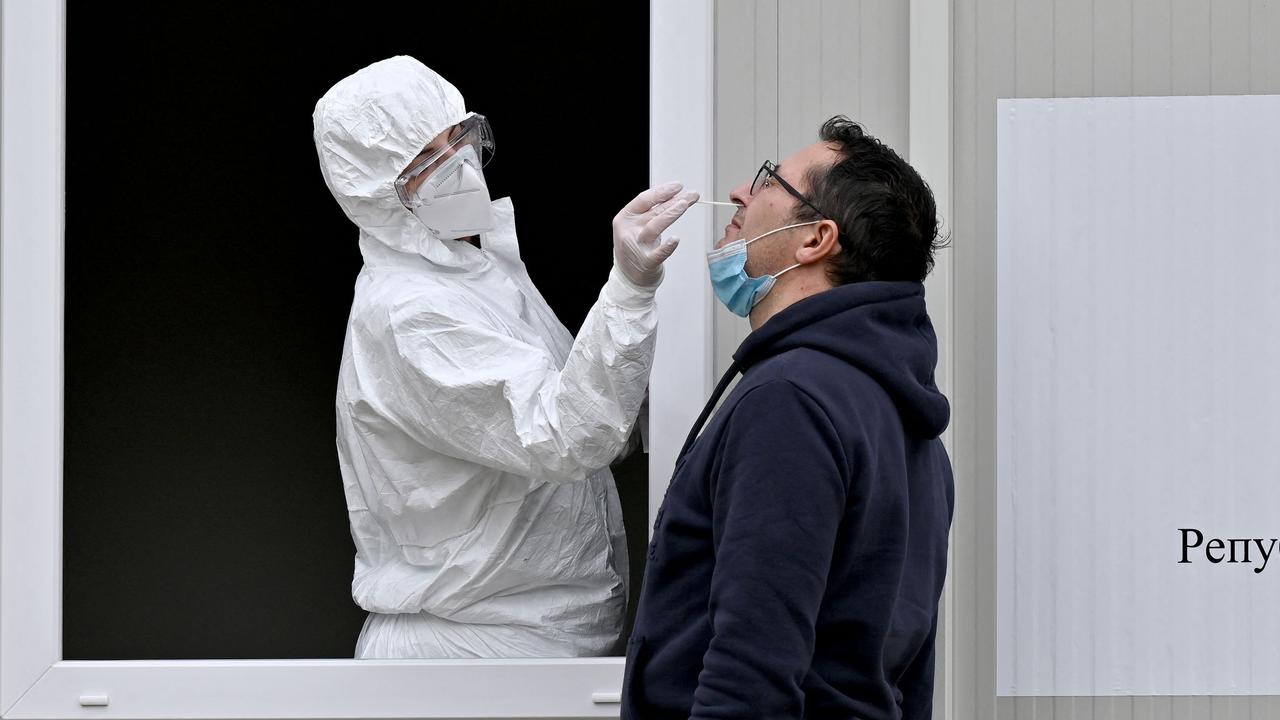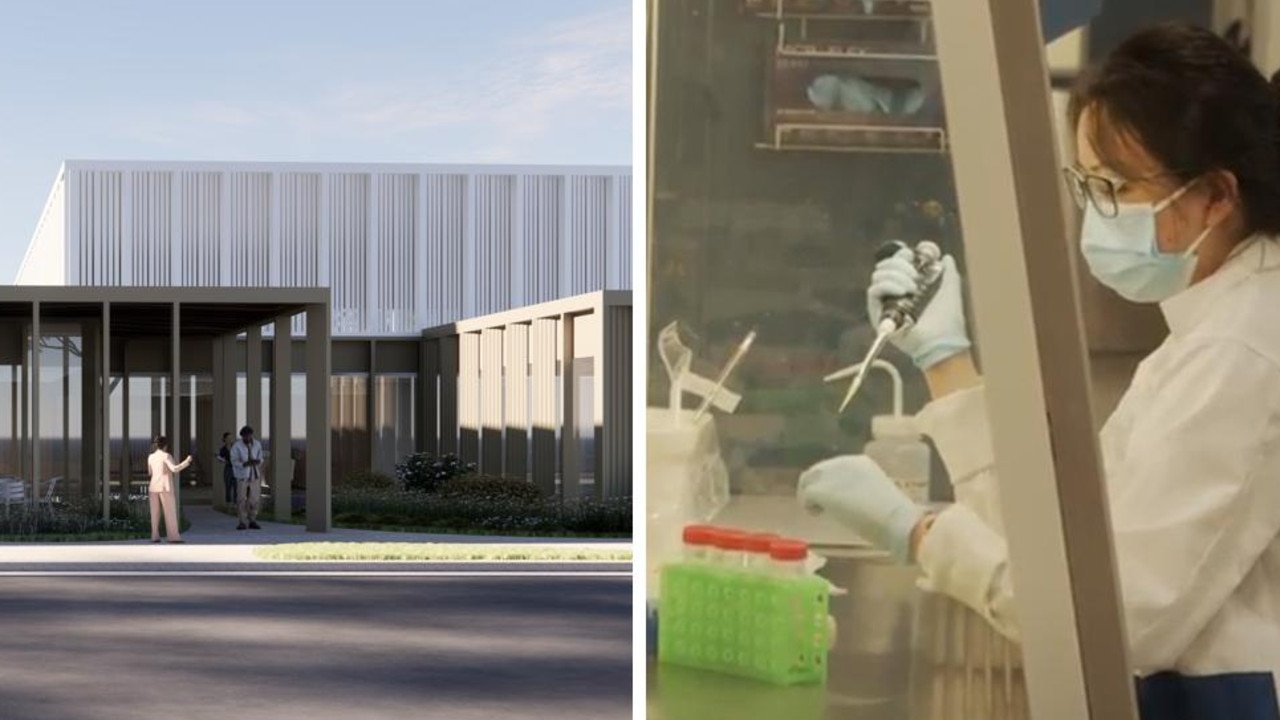Faces of Australia’s Covid-19 victims as death toll nears 1000
Behind the daily Covid numbers is a tragic Australian human story that continues to break hearts.
Coronavirus
Don't miss out on the headlines from Coronavirus. Followed categories will be added to My News.
January, 2020. Australia was emerging from the ashes of a black summer, and bushfire smoke still shrouded the eastern seaboard. We didn’t know it yet, but another threat had made it undetected onto Australian shores.
On January 25, a man tested positive to a new virus known as severe acute respiratory syndrome coronavirus 2, or SARS-CoV-2. He was a Chinese national who flew into Melbourne from the mainland province of Guandong on January 19. He had come from the city of Wuhan. And he was Australia’s Patient Zero, the first person known to have been infected with the virus that caused the respiratory disease Covid-19.
“The first case of novel coronavirus (2019-nCoV) has been confirmed by Victoria Health Authorities this morning,’’ a statement from the Victorian health department advised.
Thankfully, Patient Zero survived. But many others, mainly the very elderly and those with underlying medical conditions, did not. Australia is set to pass a grim milestone of 1000 Covid deaths. On Friday 991 had lost their lives in the pandemic.

A total of 48,801 infections have been recorded. As of Friday, 792 people were being treated in hospital, 128 of them fighting for life in intensive care, the vast majority in Sydney.
The disease is known to have emerged from Wuhan in 2019, probably from a wet market where animals were sold as pets or slaughtered for food in unhygienic conditions. Chinese authorities failed to co-operate with international investigators and covered up the original outbreak, so the origins of the disease remain murky, with unresolved questions about whether it emerged from a laboratory in Wuhan.
Its leap from animals to humans sparked the worst pandemic since the Spanish ‘flu in 1918.
The first Australian to lose their life in Australia from Covid-19 was James Kwan, a much-loved father and husband, who died at Perth’s Sir Charles Gairdner Hospital on March 1.
The 78-year-old and his wife Theresa, 79, had been repatriated to their home city after they contracted the disease on board the Covid-riddled Diamond Princess cruise ship in Japan.
With 150 other Australians rescued from the ship, he was taken to the Howard Springs quarantine camp in the Northern Territory on-board a flight organised by the Australian Government, where he was diagnosed with the disease.
He died alone, his infection making it impossible for his wife and family to be with him in his final hours.
“My husband passed away peacefully knowing that his family loved him,” Mrs Kwan said in a statement from the hospital, where her condition was stabilised.

Despite the growing Covid crisis, the Ruby Princess cruise ship was cleared to leave Sydney on March 8 for a 13-night cruise around New Zealand. By the time it got back, two days early on March 19, many of the 2700 people on board were infected. They were allowed to disembark and dispersed across Australia and overseas.
Karla Lake, 75, died in a Caboolture hospital on March 29, her Covid-positive husband Graeme by her side. They both caught the virus on board.
“She was just the loveliest person you could ever have married,” Mr Lake later told the media. “She was an angel. She used to do work for Vietnam veterans in Hervey Bay … She would have done anything for everyone.”
An inquiry would later find 662 Covid cases could be traced back to the Ruby Princess, along with 28 deaths, including eight from the United States.
Francesco “Frank” Ferraro, 75, became South Australia’s first Covid-19 victim after returning from a large family wedding in Melbourne in March last year. At least 13 guests had flown in from Italy, a virus hotspot.


Malcolm Todd, 76, became the state’s second death after he contracted the deadly virus while visiting his son in the Barossa Valley. Grandmother of four Linda Lavender, 62, was the state’s first Covid-19 death linked to the Ruby Princess. Another South Australian Ruby Princess passenger, grandfather of four Roger Leaney, 74, also died.
With Australia in a nationwide lockdown, the first wave of the virus began to peter out, and by April last year, numbers were down to a handful of new infections a day. The death toll sat at around 100 nationwide.
Then came Victoria’s second wave.
In late June last year, two leaks from Victoria’s fatally-flawed hotel quarantine program saw security guards inadvertently spread the virus through Melbourne’s northern and western suburbs. From there, it found its way into nursing homes, with devastating results.


St Basil’s, a Greek Orthodox nursing home in suburban Fawkner, became the epicentre of the catastrophe. Through July and August, 50 residents in the 150-bed facility died. The entire staff was stood down, and the doctors who eventually came in found the elderly, frail residents, many of whom had advanced dementia, were thirsty, hungry and had not been showered. A Coroner’s inquiry last week heard there were genuine fears some could have starved to death.
The virus raged through social housing towers, nursing and disability homes, and was eventually tamped down in late October, after the Andrews Government introduced a strict lockdown including a curfew. By then, an appalling 801 people had died.
Evelyn Dibbs was 103 and living at St Basil’s when Covid struck. She had lived through two world wars, the Spanish ‘flu and the Great Depression.
Her two daughters held her hand for the final time six days before she died on July 23 in the Royal Melbourne Hospital, where she had volunteered every week for 36 years
She was Covid’s oldest victim in Australia.


Fotini Atzarakis was suffering from Parkinson’s disease when her family moved the 77-year-old into St Basil’s for two weeks’ respite care.
She never made it out, and died on July 29.
“What happened with my mum was a whirlwind that happened quite quickly and horribly,” her daughter Kathy Bourinaris said this week.
“We never thought we would never see her again. We thought she would be safe and comfortable where she was, but she went in and we never saw her again.”
“A year and a bit has gone but I feel like it has gotten harder because the way she died she shouldn’t have died.”
Mrs Bourinaris never heard from St Basil’s after her mother’s death – until she received a call from the home in November. She assumed they were calling to ask how she was coping following her mother’s death. Instead, they bizarrely asked if her mother was interested in coming in for a tour of the home.
“Right now it is so black and white what happened in the facility, but right now we are still suffering in grey,” she said.
“Once we get justice and closure I can move on, mourn properly and get closure.”

On June 16, Australia’s third wave started in Sydney when an unvaccinated limousine driver, who was not wearing a mask, transported overseas arrivals into quarantine. He caught and inadvertently spread, the highly-infectious variant known as Delta. By last week, case numbers in NSW were exceeding 700 a day, scenes which mirrored Victoria the previous winter.
Unlike Victoria however, which saw more than 800 people die in two months, Sydney’s death toll remained much lower, reflecting the fact millions of people were now vaccinated, and Delta was striking younger, healthier people who were more able to recover.

By Friday, 81 people had sadly died in the latest outbreak in New South Wales. This includes the youngest person known to have died in Australia with Covid, 15-year-old schoolboy Osama Subuh, who was also being treated for pneumococcal meningitis when he tragically passed away in the Sydney Children’s Hospital.
Sydney mother-of three Ianeta Isaako, 30, collapsed and died at her home in the city’s west on Monday after being struck down by Covid. She was the youngest woman to lose her life in Australia to the virus.
Originally published as Faces of Australia’s Covid-19 victims as death toll nears 1000
Read related topics:COVID-19 Vaccine


